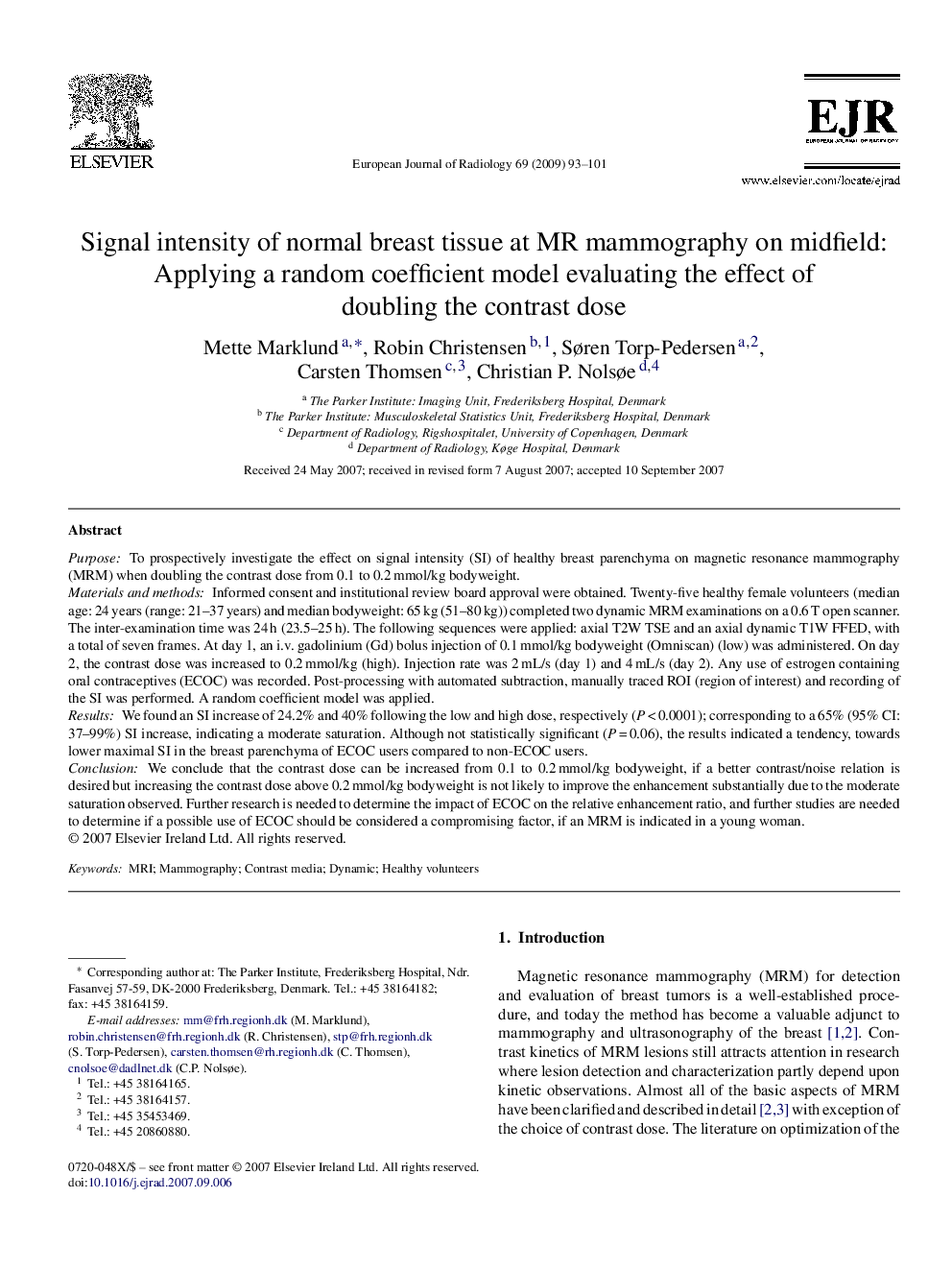| Article ID | Journal | Published Year | Pages | File Type |
|---|---|---|---|---|
| 4227724 | European Journal of Radiology | 2009 | 9 Pages |
PurposeTo prospectively investigate the effect on signal intensity (SI) of healthy breast parenchyma on magnetic resonance mammography (MRM) when doubling the contrast dose from 0.1 to 0.2 mmol/kg bodyweight.Materials and methodsInformed consent and institutional review board approval were obtained. Twenty-five healthy female volunteers (median age: 24 years (range: 21–37 years) and median bodyweight: 65 kg (51–80 kg)) completed two dynamic MRM examinations on a 0.6 T open scanner. The inter-examination time was 24 h (23.5–25 h). The following sequences were applied: axial T2W TSE and an axial dynamic T1W FFED, with a total of seven frames. At day 1, an i.v. gadolinium (Gd) bolus injection of 0.1 mmol/kg bodyweight (Omniscan) (low) was administered. On day 2, the contrast dose was increased to 0.2 mmol/kg (high). Injection rate was 2 mL/s (day 1) and 4 mL/s (day 2). Any use of estrogen containing oral contraceptives (ECOC) was recorded. Post-processing with automated subtraction, manually traced ROI (region of interest) and recording of the SI was performed. A random coefficient model was applied.ResultsWe found an SI increase of 24.2% and 40% following the low and high dose, respectively (P < 0.0001); corresponding to a 65% (95% CI: 37–99%) SI increase, indicating a moderate saturation. Although not statistically significant (P = 0.06), the results indicated a tendency, towards lower maximal SI in the breast parenchyma of ECOC users compared to non-ECOC users.ConclusionWe conclude that the contrast dose can be increased from 0.1 to 0.2 mmol/kg bodyweight, if a better contrast/noise relation is desired but increasing the contrast dose above 0.2 mmol/kg bodyweight is not likely to improve the enhancement substantially due to the moderate saturation observed. Further research is needed to determine the impact of ECOC on the relative enhancement ratio, and further studies are needed to determine if a possible use of ECOC should be considered a compromising factor, if an MRM is indicated in a young woman.
